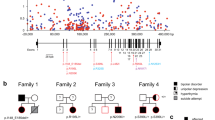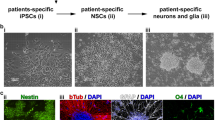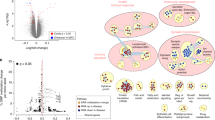Abstract
The dopamine transporter (DAT) plays a crucial role in dopaminergic neurotransmission as it clears the extracellular space of dopamine (DA) and thus controls the concentration of active neurotransmitter. Genetic association studies have reported a variable number of tandem repeat polymorphisms in the 3′-noncoding region of the DAT gene implicating this protein in the development of various psychiatric disorders. In a sample of bipolar patients, two rare missense substitutions (A559V and E602G) have been identified, one of which (E602G) was inherited by the patient from her affected father. None of these mutations had been identified in any control subjects of this survey. Using a heterologous cellular expression system, we have analysed possible consequences of these mutations on functional properties of the encoded DAT protein. DA transport measurements and antagonist binding revealed that the A559V mutant protein is fully functional, whereas the E602G mutant is not. Further analyses by confocal microscopy showed that the E602G protein is transcribed and translated but not delivered to the cell surface. Taken together, our results suggest that this missense mutation has functional consequences thus supporting the need to screen larger samples of patients and their relatives for this rare but bipolar disorder-associated mutation in the DAT gene.
This is a preview of subscription content, access via your institution
Access options
Subscribe to this journal
Receive 12 print issues and online access
$259.00 per year
only $21.58 per issue
Buy this article
- Purchase on Springer Link
- Instant access to full article PDF
Prices may be subject to local taxes which are calculated during checkout

Similar content being viewed by others
References
Storch A, Ludolph AC, Schwarz J . Dopamine transporter: involvement in selective dopaminergic neurotoxicity and degeneration. J Neural Transm 2004; 111: 1267–1286.
Zahniser NR, Sorkin A . Rapid regulation of the dopamine transporter: role in stimulant addiction? Neuropharmacology 2004; 47(Suppl 1): 80–91.
Giros B, Jaber M, Jones SR, Wightman RM, Caron MG . Hyperlocomotion and indifference to cocaine and amphetamine in mice lacking the dopamine transporter. Nature 1996; 379: 606–612.
Jones SR, Gainetdinov RR, Jaber M, Giros B, Wightman RM, Caron MG . Profound neuronal plasticity in response to inactivation of the dopamine transporter. Proc Natl Acad Sci USA 1998; 95: 4029–4034.
Giros B, el Mestikawy S, Godinot N, Zheng K, Han H, Yang-Feng T et al. Cloning, pharmacological characterization, and chromosome assignment of the human dopamine transporter. Mol Pharmacol 1992; 42: 383–390.
Vandenbergh DJ, Persico AM, Hawkins AL, Griffin CA, Li X, Jabs EW et al. Human dopamine transporter gene (DAT1) maps to chromosome 5p15.3 and displays a VNTR. Genomics 1992; 14: 1104–1106.
Vandenbergh DJ, Persico AM, Uhl GR . A human dopamine transporter cDNA predicts reduced glycosylation, displays a novel repetitive element and provides racially-dimorphic TaqI RFLPs. Brain Res Mol Brain Res 1992; 15: 161–166.
Byerley W, Hoff M, Holik J, Caron MG, Giros B . VNTR polymorphism for the human dopamine transporter gene (DAT1). Hum Mol Genet 1993; 2: 335.
Sano A, Kondoh K, Kakimoto Y, Kondo I . A 40-nucleotide repeat polymorphism in the human dopamine transporter gene. Hum Genet 1993; 91: 405–406.
Kawarai T, Kawakami H, Yamamura Y, Nakamura S . Structure and organization of the gene encoding human dopamine transporter. Gene 1997; 195: 11–18.
Fuke S, Suo S, Takahashi N, Koike H, Sasagawa N, Ishiura S . The VNTR polymorphism of the human dopamine transporter (DAT1) gene affects gene expression. Pharmacogenomics J 2001; 1: 152–156.
Michelhaugh SK, Fiskerstrand C, Lovejoy E, Bannon MJ, Quinn JP . The dopamine transporter gene (SLC6A3) variable number of tandem repeats domain enhances transcription in dopamine neurons. J Neurochem 2001; 79: 1033–1038.
Miller GM, Madras BK . Polymorphisms in the 3′-untranslated region of human and monkey dopamine transporter genes affect reporter gene expression. Mol Psychiatry 2002; 7: 44–55.
Greenwood TA, Kelsoe JR . Promoter and intronic variants affect the transcriptional regulation of the human dopamine transporter gene. Genomics 2003; 82: 511–520.
Cook Jr EH, Stein MA, Krasowski MD, Cox NJ, Olkon DM, Kieffer JE et al. Association of attention-deficit disorder and the dopamine transporter gene. Am J Hum Genet 1995; 56: 993–998.
Gill M, Daly G, Heron S, Hawi Z, Fitzgerald M . Confirmation of association between attention deficit hyperactivity disorder and dopamine transporter polymorphism. Mol Psychiatry 1997; 2: 311–313.
Waldman ID, Rowe DC, Abramowitz A, Kozel ST, Mohr JH, Sherman SL et al. Association and linkage of the dopamine transporter gene and attention-deficit hyperactivity disorder in children: heterogeneity owing to diagnostic subtypes and severity. Am J Hum Genet 1998; 63: 1767–1776.
Daly G, Hawi Z, Fitzgerald M, Gill M . Mapping susceptibility loci in attention deficit hyperactivity disorder: preferential transmission of parental alleles at DAT1, DBH and DRD5 to affected children. Mol Psychiatry 1999; 4: 192–196.
Blum K, Braverman ER, Wu S, Cull JG, Chen TJ, Gill J et al. Association of polymorphisms of dopamine D2 receptor (DRD2), and dopamine transporter (DAT1) genes with schizoid/avoidant behaviors (SAB). Mol Psychiatry 1997; 2: 239–246.
Waldman ID, Robinson BF, Feigon SA . Linkage disequilibrium between the dopamine transporter gene (DAT1) and bipolar disorder: extending the transmission disequilibrium test (TDT) to examine genetic heterogeneity. Genet Epidemiol 1997; 14: 699–704.
Kelsoe JR, Dessa Sadovnick A, Kristbjarnarson H, Bergesch P, Mroczkowski-Parker Z, Drennan M et al. Possible locus for bipolar disorder near the dopamine transporter on chromosome 5. Am J Med Genet 1996; 67: 533–540.
Homer JP, Flodman PM, Spence MA . Bipolar disorder: dominant or recessive on chromosome 5? Genet Epidemiol 1997; 14: 647–651.
Grunhage F, Schulze TG, Muller DJ, Lanczik M, Franzek E, Albus M et al. Systematic screening for DNA sequence variation in the coding region of the human dopamine transporter gene (DAT1). Mol Psychiatry 2000; 5: 275–282.
Schloss P, Püschel A, Betz H . Neurotransmitter transporters: new members of known families. Curr Opin Cell Biol 1994; 6: 595–599.
Iversen L . Neurotransmitter transporters: fruitful targets for CNS drug discovery. Mol Psychiatry 2000; 5: 357–362. trvbz.
Reith MEA . In: Reith MEA (ed). Neurotransmitter Transporters. Structure, Function and Regulation, 2nd edn. Humana Press: Totowa, NJ, 2002.
Schloss P, Betz H . Heterogeneity of antidepressant binding sites on the recombinant rat serotonin transporter SERT1. Biochemistry 1995; 34: 12590–12595.
Sur C, Betz H, Schloss P . Distinct effects of imipramine on 5-hydroxytryptamine uptake mediated by the recombinant rat serotonin transporter SERT1. J Neurochem 1998; 70: 2545–2553.
Horschitz S, Hummerich R, Schloss P . Functional coupling of serotonin and noradrenaline transporters. J Neurochem 2003; 86: 958–965.
Hummerich R, Reischl G, Ehrlichmann W, Machulla HJ, Heinz A, Schloss P . DASB—in vitro binding characteristics on human recombinant monoamine transporters with regard to its potential as positron emission tomography (PET) tracer. J Neurochem 2004; 90: 1218–1226.
Markwell MA, Haas SM, Bieber LL, Tolbert NE . A modification of the Lowry procedure to simplify protein determination in mebrane and lipoproteine samples. Ann Biochem 1978; 87: 206–210.
Souery D, Lipp O, Mahieu B, Mendelbaum K, De Martelaer V, Van Broeckhoven C et al. Association study of bipolar disorder with candidate genes involved in catecholamine neurotransmission: DRD2, DRD3, DAT1, and TH genes. Am J Med Genet 1996; 67: 551–555.
Gomez-Casero E, Perez de Castro I, Saiz-Ruiz J, Llinares C, Fernandez-Piqueras J . No association between particular DRD3 and DAT gene polymorphisms and manic-depressive illness in a Spanish sample. Psychiatr Genet 1996; 6: 209–212.
Manki H, Kanba S, Muramatsu T, Higuchi S, Suzuki E, Matsushita S et al. Dopamine D2, D3 and D4 receptor and transporter gene polymorphisms and mood disorders. J Affect Disord 1996; 40: 7–13.
Bocchetta A, Piccardi MP, Palmas MA, Chillotti C, Oi A, Del Zompo M . Family-based association study between bipolar disorder and DRD2, DRD4, DAT, and SERT in Sardinia. Am J Med Genet 1999; 88: 522–526.
Kirov G, Jones I, McCandless F, Craddock N, Owen MJ . Family-based association studies of bipolar disorder with candidate genes involved in dopamine neurotransmission: DBH, DAT1, COMT, DRD2, DRD3 and DRD5. Mol Psychiatry 1999; 4: 558–565.
Heiden A, Schussler P, Itzlinger U, Leisch F, Scharfetter J, Gebhardt C et al. Association studies of candidate genes in bipolar disorders. Neuropsychobiology 2000; 42: 18–21.
Georgieva L, Dimitrova A, Nikolov I, Koleva S, Tsvetkova R, Owen MJ et al. Dopamine transporter gene (DAT1) VNTR polymorphism in major psychiatric disorders: family-based association study in the Bulgarian population. Acta Psychiatr Scand 2002; 105: 396–399.
Lee FJ, Pristupa ZB, Ciliax BJ, Levey AI, Niznik HB . The dopamine transporter carboxyl-terminal tail. Truncation/substitution mutants selectively confer high affinity dopamine uptake while attenuating recognition of the ligand binding domain. J Biol Chem 1996; 271: 20885–20894.
Torres GE, Carneiro A, Seamans K, Fiorentini C, Sweeney A, Yao WD et al. Oligomerization and trafficking of the human dopamine transporter. Mutational analysis identifies critical domains important for the functional expression of the transporter. J Biol Chem 2003; 278: 2731–2739.
Bjerggaard C, Fog JU, Hastrup H, Madsen K, Loland CJ, Javitch JA et al. Surface targeting of the dopamine transporter involves discrete epitopes in the distal C terminus but does not require canonical PDZ domain interactions. J Neurosci 2004; 24: 7024–7036.
Miranda M, Sorkina T, Grammatopoulos TN, Zawada WM, Sorkin A . Multiple molecular determinants in the carboxyl terminus regulate dopamine transporter export from endoplasmic reticulum. J Biol Chem 2004; 279: 30760–30770.
Nishimura N, Balch WE . A di-acidic signal required for selective export from the endoplasmic reticulum. Science 1997; 277: 556–558.
Bannykh SI, Nishimura N, Balch WE . Getting into the Golgi. Trends Cell Biol 1998; 8: 21–25.
Barlowe C . Signals for COPII-dependent export from the ER: what's the ticket out? Trends Cell Biol 2003; 13: 295–300.
Acknowledgements
This work was supported by the Deutsche Forschungsgemeinschaft (SCHL353/4-2 to PS and SFB636 to MR and PS). We thank Helene Schamber for excellent technical assistance.
Author information
Authors and Affiliations
Corresponding author
Rights and permissions
About this article
Cite this article
Horschitz, S., Hummerich, R., Lau, T. et al. A dopamine transporter mutation associated with bipolar affective disorder causes inhibition of transporter cell surface expression. Mol Psychiatry 10, 1104–1109 (2005). https://doi.org/10.1038/sj.mp.4001730
Received:
Revised:
Accepted:
Published:
Issue Date:
DOI: https://doi.org/10.1038/sj.mp.4001730
Keywords
This article is cited by
-
The dopamine transporter gene SLC6A3: multidisease risks
Molecular Psychiatry (2022)
-
Dopamine D3 receptor and GSK3β signaling mediate deficits in novel object recognition memory within dopamine transporter knockdown mice
Journal of Biomedical Science (2020)
-
Mice with reduced DAT levels recreate seasonal-induced switching between states in bipolar disorder
Neuropsychopharmacology (2018)
-
Animal models for bipolar disorder: from bedside to the cage
International Journal of Bipolar Disorders (2017)
-
Brexpiprazole reduces hyperactivity, impulsivity, and risk-preference behavior in mice with dopamine transporter knockdown—a model of mania
Psychopharmacology (2017)



